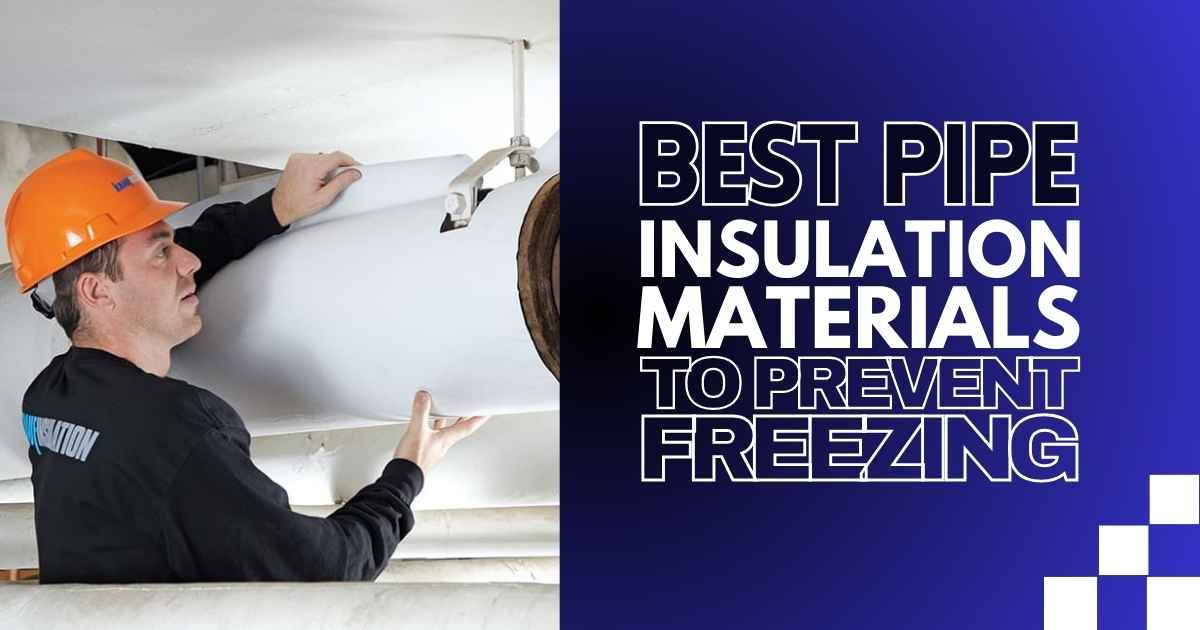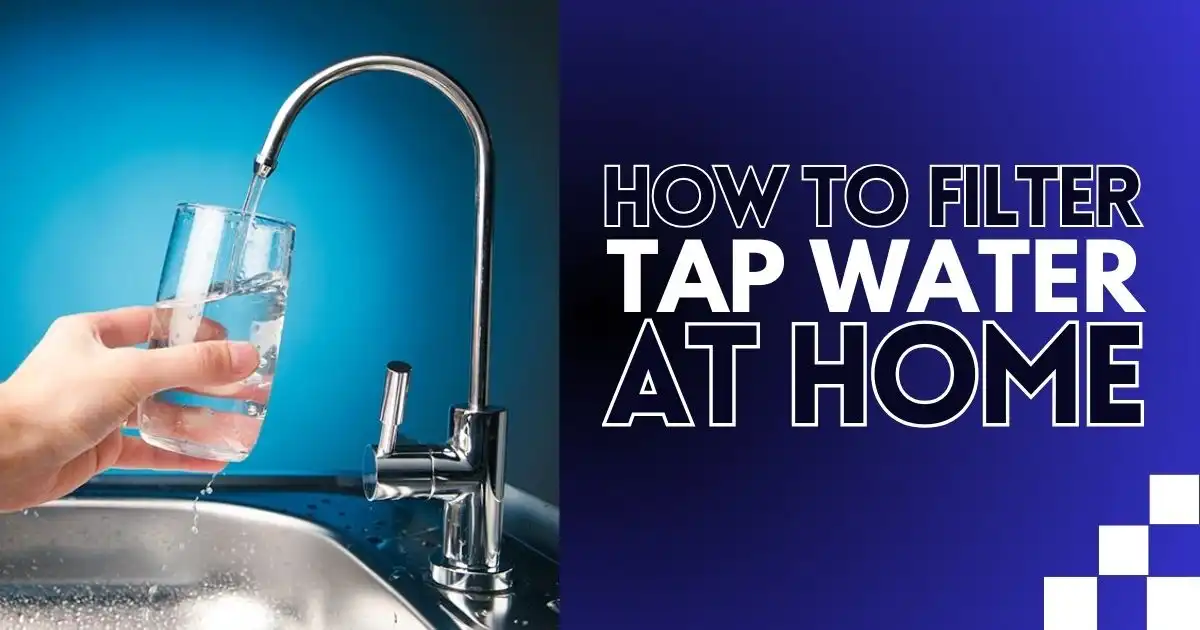Did you know? A pipe that bursts from freezing can spill up to 250 gallons of water each day—that’s like flooding your home with multiple bathtubs of water. Just one burst pipe can lead to thousands of dollars in repair costs, from fixing water damage to replacing flooring or furniture.
But with the right pipe insulation, you can avoid these costly repairs, protect your home from water damage, and keep your pipes safe, even on the coldest days. So, why take the risk of a burst pipe when a little insulation can make all the difference?
What is Pipe Insulation?
Pipe insulation is a material wrapped around pipes to protect them from very hot or cold temperatures. In cold weather, insulation keeps pipes from freezing and bursting, which can save you from costly water damage. It also prevents heat loss from hot water pipes, so your water heater doesn’t have to work as hard, which can lower energy bills.
Insulation reduces condensation on pipes, stopping moisture buildup that can lead to rust or mold over time. Keeping pipes safe and efficient, insulation helps extend the life of your plumbing and saves you money on repairs and energy costs.
5 Best Pipe Insulation Materials to Prevent Freezing
To help you choose the best pipe insulation, we’ll go over the five most popular types, how they’re used, and where they work best. This way, you can find the right option that fits your needs and budget.
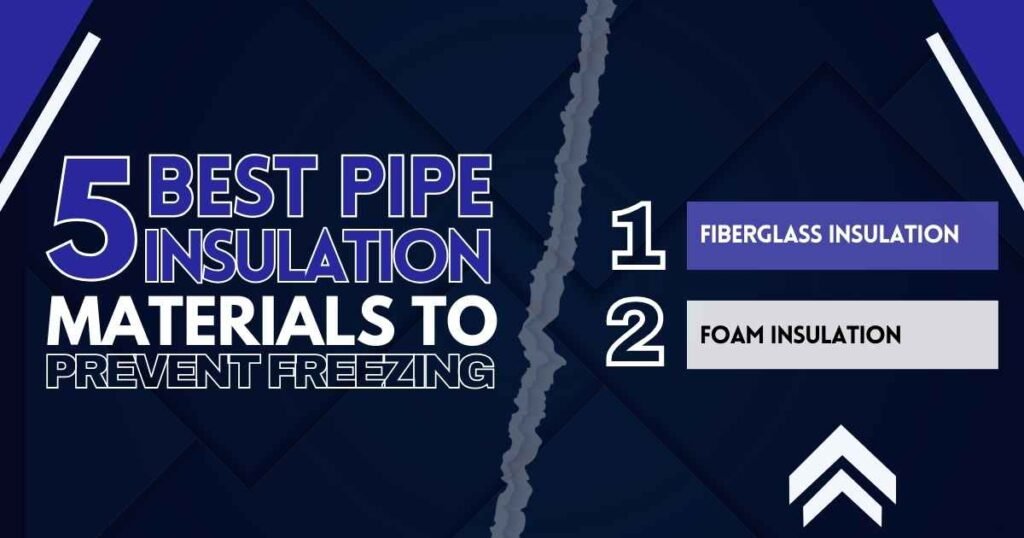
1. Fiberglass Insulation
Fiberglass insulation for pipes works well for both cold and hot water pipes but shines when used on copper pipes carrying hot water. This material does a great job of holding in heat, making it more effective than many other types. However, it can be pricier, costing about $1.50 per linear foot for 3- to 6-foot tubes.
Fiberglass insulation is ideal for hot water pipes. It’s also a smart choice for pipes in areas with a fire risk or in spaces that can get very hot, like an attic in a warm climate.
2. Foam Insulation
Foam insulation for pipes is a popular choice for both hot and cold water lines. It’s especially great for copper pipes that carry hot water since it keeps the heat in better than other types. However, foam insulation for pipes can be pricier, usually costing about $1.50 per foot for 3- to 6-foot pieces.
This insulation is ideal for DIYers who want to insulate cold water pipes without breaking the bank. It’s one of the cheapest insulation options and is easy to handle. If you’re preparing an outdoor faucet for winter or protecting indoor pipes from condensation, foam insulation for pipes is a simple and safe choice that doesn’t require protective gear to install.
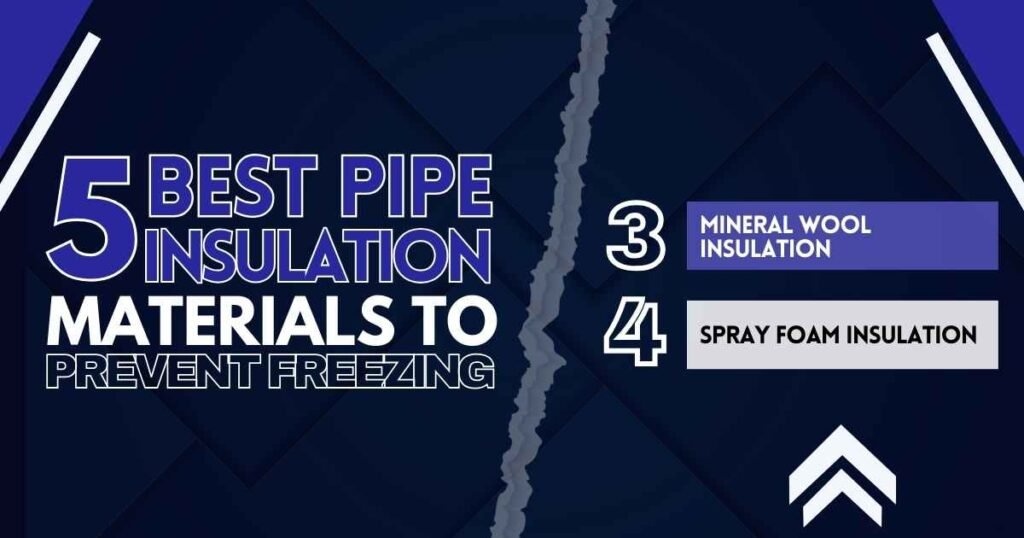
3. Mineral Wool Insulation
Mineral wool, or rock wool, is made from heated natural rock spun into a wool-like texture. It works well for both hot and cold pipes and can handle very high heat—over 650°F for some brands—plus, it’s fire-resistant. Mineral wool is often made from recycled materials, making it a more eco-friendly choice. However, it can have health risks if the fine fibers are inhaled.
Mineral wool is great for reducing noise and boosting efficiency, especially around older, noisy HVAC systems or hot water pipes. Its natural low heat conductivity helps control heat loss, lowering energy costs.
4. Spray Foam Insulation
Spray foam insulation is an expandable foam that’s sprayed onto pipes, making it great for tight or oddly shaped spaces. It works well with pipes like copper that expand with heat, but be careful using it on PVC or CPVC pipes, as it can cause damage.
There are two types: open-cell (lower cost, lower R-value) and closed-cell (higher cost, higher R-value). The most common type is polyurethane foam, but some types may release VOCs, so water-based or vegetable oil-based options are available.Ideal for hard-to-reach areas and spaces with condensation, closed-cell spray foam is recommended for water resistance.
5. Rubber Insulation
Rubber insulation is a strong, flexible choice for both hot and cold pipes. It resists moisture, prevents mold, and works well in humid areas. Durable and able to handle temperature changes, it fits copper, PVC, and iron pipes, costing about $1 per foot—making it a mid-range option.
Rubber insulation’s flexibility makes it perfect for hard-to-reach spots or pipes with many twists and turns. Since it can bend without special fittings like tees or elbows, you can simply cut and shape it to cover corners and tight spaces. This makes installation easy and helps keep pipes well-insulated in challenging areas.
Things to Keep in Mind When Insulating Water Pipes
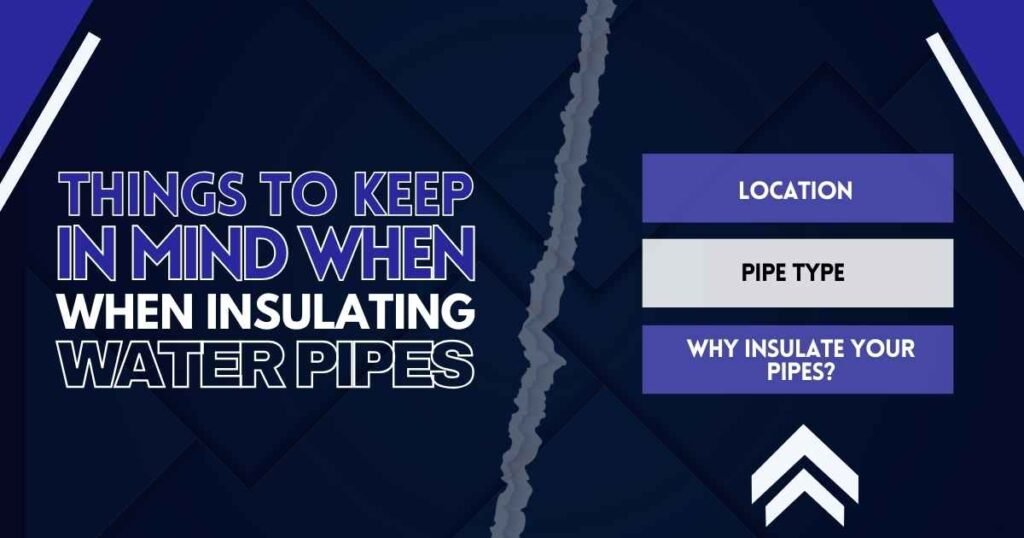
- Location: The location of your pipes helps decide if they need insulation. Outdoor pipes or indoor pipes in unheated spaces, like basements or crawl spaces, should be insulated to prevent freezing. Pipes can freeze when temperatures fall below 32°F, so in those areas, choose insulation with a high R-value.
- Pipe Type: Common home pipes include copper, PVC, and PEX, each with unique qualities. For instance, PEX pipes are less likely to freeze compared to copper, making them a popular choice for outdoor pipe insulation. While many insulation materials are versatile, some work better with specific pipe types.
- Why Insulate Your Pipes? Think about why you’re insulating. For freezing protection, you might need different insulation than for condensation control. Insulating hot water pipes also helps them stay warm longer, making them more efficient by reducing heat loss to the air.
Protect Your Pipes, Avoid Winter Repairs
Think of pipe insulation as a winter shield for your home, stopping freezing issues before they start. Choosing the right insulation isn’t just about saving money—it’s about protecting your space and avoiding those stressful, costly repairs that can turn any winter into a nightmare. With the right insulation in place, you can feel secure, knowing your pipes are safe and sound.
Ready to keep your pipes safe this winter? Vegas Plumbing Pros can help you choose and install the best insulation to protect your home from freezing and costly damage. Don’t wait until it’s too late—call Vegas Plumbing Pros today and stay worry-free all winter long!
Got a friend or family member who could benefit from this? Share this post and help them keep their home safe this winter!
FAQs
What is the best insulation to keep pipes from freezing?
The best types of pipe insulation materials to keep pipes from freezing include closed-cell foam. It forms a tight barrier around pipes, blocking cold air and keeping warmth inside. Moisture-resistant and durable, this insulation is perfect for areas with harsh winter temperatures.
What is the best insulation for freezing?
Closed-cell foam and rubber are top choices for water pipe insulation materials in freezing temperatures. Both resist moisture well and work effectively in the cold. Rubber is also very flexible, making it ideal for hard-to-reach pipes. Together, these materials offer lasting protection against extreme cold.
What is the best thing to stop pipes from freezing?
Along with using closed-cell foam or rubber insulation, you can also keep pipes warmer by placing them in heated areas, letting faucets drip in extreme cold, and sealing any drafts around them. These simple steps add extra protection to keep pipes from freezing.
How to insulate water pipes?
To insulate water pipes, first choose either foam pipe sleeves or wrap tape. Measure and cut the insulation to fit, leaving a bit extra for joints. Slide on the foam or wrap the tape tightly around the pipe, ensuring there are no gaps. Finally, seal any joints with tape and check for leaks before starting.
